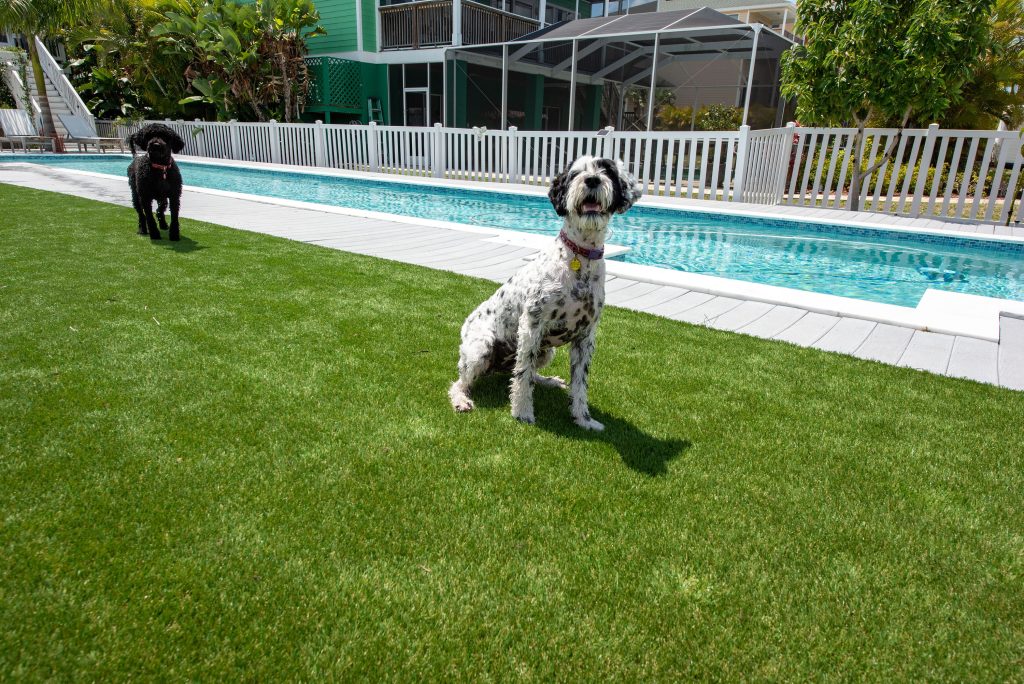- BACKYARD
- COMMERCIAL
- ENVIRONMENT
- FIELD TURF NEWS
- GOLF
- MAINTENANCE
- NEWS
- PETS
- POOL
- RESIDENTIAL
- TURF TIPS
What Every Homeowner Needs to Know Before Purchasing Artificial Grass


Any home transformation project is a sizable investment of both time and money, so it’s important to be an informed consumer before making any big decisions. Committing to artificial turf in particular can feel like a daunting task since the market is flooded with different products and companies, all of whom offer varying levels of expertise. Fortunately, we’re here to help with a handy guide to the artificial turf market.
Here are some things to consider to make sure your artificial grass investment is a wise one:
Know the Benefits
You might feel overwhelmed by choice and tempted to stick with organic sod instead. Don’t forget: there are many, many benefits to installing high-quality artificial grass. You’ll save countless dollars and hours by eliminating the need to mow, fertilize or maintain your grass. In the summer months, you’ll avoid astronomical water bills, and your yard will stay green through the winter. Dog owners will take comfort in the fact that their pet is less likely to dig up the lawn, nor destroy it with their play or, well, their business. In fact, with the right drainage you’ll be able to clean your lawn with a simple rinse. The benefits of artificial grass are numerous — as long as you make informed decisions when purchasing.
All in the Fabric
Though we often use the terms interchangeably, “turf” can describe shorter sports grass while “artificial grass” or “synthetic grass” (or even “fake grass”) describes landscape grass, which comes with longer blades. For both kinds of landscapes, there are two main materials used to craft them: polyethylene or nylon. Nylon is an outdated method for artificial lawns (and you can learn more about the history of artificial grass here). It’s often unappealing aesthetically, scratchy to the touch and prone to fading over time. The best artificial lawns use polyethylene, which is softer to the touch, better for foot traffic and more realistic in every way.
Fill It In
An integral part of an artificial lawn is the infill, which is a substance that weighs the turf down while keeping the grass blades erect. While some sales reps will try to tell you otherwise, turf without infill will get matted and flat in no time. There are plenty of infills on the market, with varying degrees of quality. Some companies offer a sand infill that has the consistency of kitty litter — but it also comes with the clumping and mess-making qualities of kitty litter. You will want to seek out an infill that offers some combination of sand and crumb rubber for the most natural, cushioned feel. Entirely synthetic infill is also an excellent choice.
Seek Trust
As with any growing industry, artificial turf is full of newcomers who lack expertise, longevity and general knowledge about what they’re doing. If you go with a newer company and they go belly up, you can say goodbye to your warranty. Instead, you should look for a trusted name in the industry. Call a customer’s previous clients, visit locations where they’ve installed turf and read online reviews to make sure you’re in the best hands.
Stick with FieldTurf
Luckily, we’ve got you covered! FieldTurf Landscape is one of America’s most trusted brand for artificial turf and synthetic grass. We’ve worked with everyone from the NFL, MLB and FIFA through thousands of residential homes across the country. Our turf is crafted to the highest possible standards at our facility in Calhoun, Georgia, and it comes with an industry-leading non-prorated warranty.
Want to talk turf? Get in touch with one of our experts.


